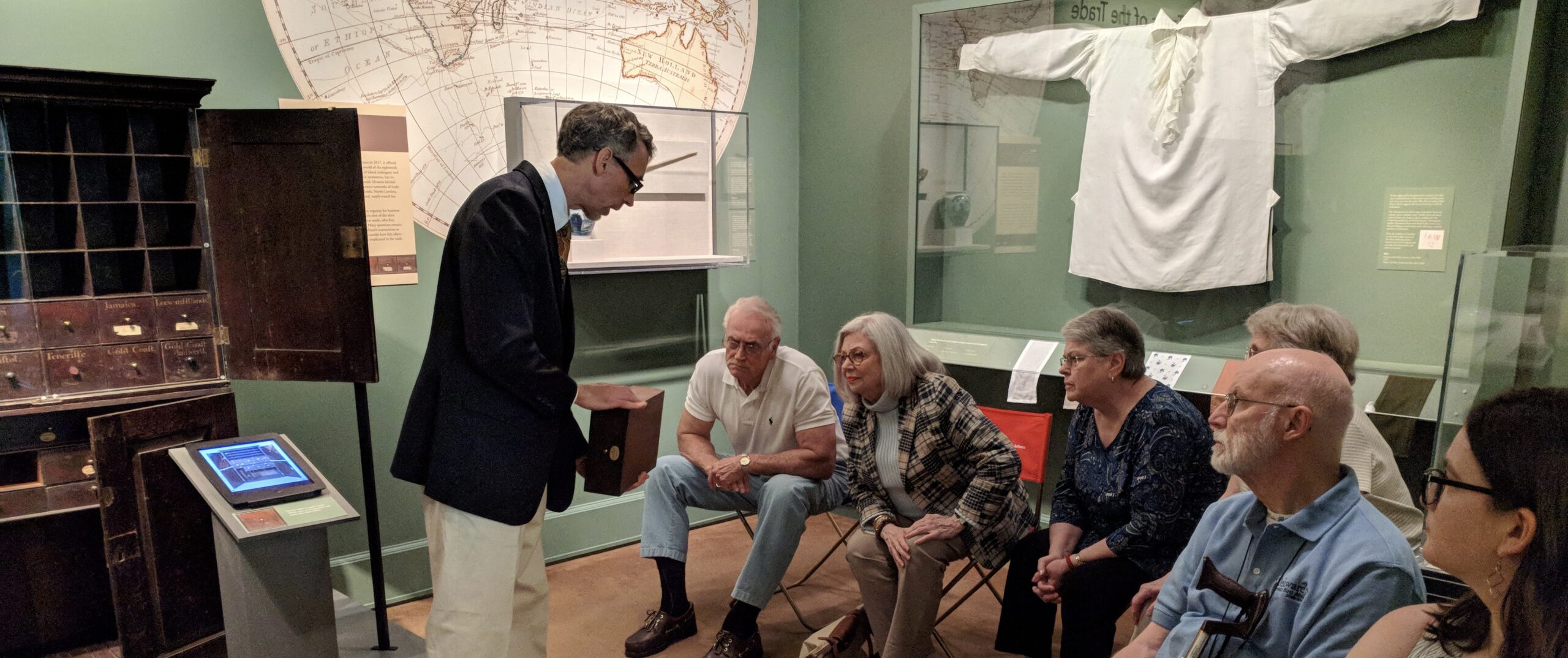The Cabinet at the Center
When Winterthur acquired this double cabinet in 2017, it offered a unique opportunity to study the Atlantic world of the eighteenth and nineteenth centuries. The cabinet’s use of island mahogany and English oak situate it in the world of Atlantic commerce, but its most compelling story is revealed when opened. Drawers labeled with the names of ports and colonies reconstruct networks of trade: Senegambia, Madeira, Jamaica, Leeward Islands, North Carolina, Waterford, Bristol, Teneriffe, Gold Coast, and―nearly erased but still visible―Philadelphia.
The owner would have used these drawers to organize his business with each location, most of which were active sites of the slave trade. We do not know where the cabinet was made, who first owned it, or where specifically it was used. Many questions remain. Nevertheless, asking questions about the cabinet’s connections to the Atlantic trade and slavery allows us to consider how this object and others in the Winterthur collection are implicated in the trade that shaped early America.
Curious? Open the interactive below to explore more closely some of the stories this cabinet holds.
Investigate the Cabinet

Close looking is a critical tool in the curator’s trade. Details of this cabinet gives clues to its long history, and raise some questions that are not yet answered. Use the interactive to investigate for yourself how curators, conservators, and others at Winterthur are continuing to learn about this new acquisition.




